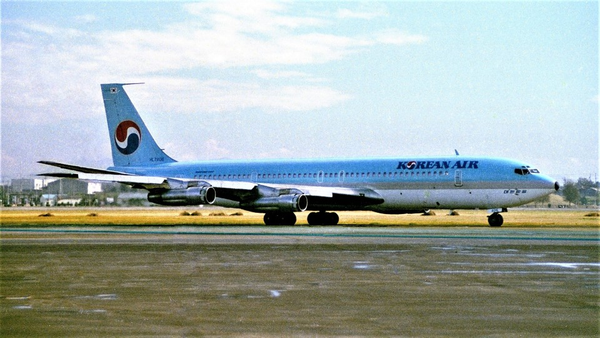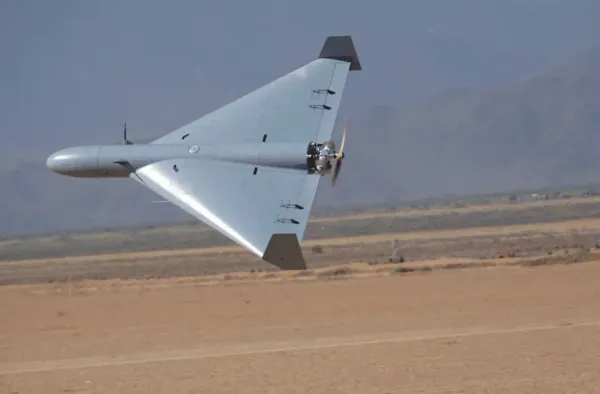In modern aircraft manufacturing, it's common for different components to be built in factories scattered across the globe. Bringing these parts together for final assembly can pose significant logistical challenges, especially when the factories are separated by thousands of miles.
Enter the Boeing Dreamlifter: a fleet of four specially-modified Boeing 747s designed to solve this very problem.

Combating Logistical Nightmares
In the past, transporting individual aircraft parts required the use of trains, trucks, and boats, the first two only being ideal in scenarios where parts were locally built. However, with different parts being shipped from all around the world, shipping across oceans would often significantly delay the production process.
Thus, when Boeing was starting its 787 Dreamliner program in 2003, the manufacturer decided to use airplanes as the primary method to transport parts between plants. This is because the 787 had various parts that were too large to be shipped in standard marine shipping containers or cargo planes. Considering that many of the Boeing 787's parts would be manufactured in Japan and Italy, using air travel for transportation would save weeks of time and money.
This was similar to a move made by Airbus in 1992. The planemaker developed the Airbus Beluga program: a fleet of five heavily-modified Airbus A300s designed to transport aircraft components from distant manufacturing facilities to final assembly line locations.

As demand grew, Airbus's Beluga fleet was unable to keep up. Thus, the manufacturer developed the Beluga XL in 2018. The XL fleet is comprised of six modified Airbus A330-200s used for larger aircraft components.
No Longer a Dream
Boeing converted three ex-passenger 747-400s into an outsized configuration so the company could easily transport components for the 787. A fourth aircraft was later added to the lineup.
All four of these aircraft came from Asia. Two 747-400s were initially operated by Taiwan’s China Airlines and were sister aircraft, registered B-18271 and B-18272. One 747-400 flew with Air China as B-2464, and another came from Malaysia Airlines, formerly registered 9M-MPA.

All of these aircraft were originally built between 1990-1992, making them 32-35 years of age currently.
Conversion of the first aircraft began in 2005. All four aircraft were sent to Taipei Taoyuan International Airport (TPE) in Taiwan for conversion. Boeing collaborated with Rocketdyne (which has since been sold to Pratt & Whitney) and Spanish aerospace company Gamesa Aeronautica to plan the structural changes for the Dreamlifter. Taipei-based Evergreen Aviation Technologies Corporation (a joint venture between EVA Air and General Electric) performed the conversions.
These conversions resulted in an "LCF" (Large Cargo Freighter) variant, which has a volume of 65,000 cubic feet (1,840 cubic meters), three times the existing cargo capacity of a standard 747-400F. In 2006, Boeing officially announced the 747 LCF's name would be the Dreamlifter, a nod to the 787’s designation as the "Dreamliner."

The first completed Dreamlifter, N747BC (formerly Air China's B-2464) rolled out of the hangar in Taipei on August 17th, 2006. The aircraft completed its maiden test flight from TPE on September 9th.
Dreamlifter Design Quirks
After conversion, N747BC was flown to Boeing Field in Seattle to complete the remainder of its testing. It was in Everett, Washington, where testing of the aircraft's iconic "swing tail" was completed.
On the Dreamlifter, the rear section of the aircraft would swing out to a 90-degree angle so that parts could be offloaded from the large cargo bay. This is a feature unique to the Dreamlifter; on other freighter aircraft, such as the 747-400F, Airbus Beluga, and Antonov 124, the nose swings upward so parts can be offloaded.
When the 747 was initially designed, the nose cargo door modification was taken into consideration as a feature for customers to purchase. However, passenger 747s that receive conversions to cargo aircraft never receive this modification. This is because the cost of making this modification is far costlier than simply adding a large rear-loading cargo door; numerous structural modifications are required, such as cutting and reinforcing the fuselage. Conversely, 747s that are built straight from the factory as freighter aircraft have those special nose doors because they were initially built with those structural changes.

Because the Dreamlifters were converted from 747s that were originally designed to carry passengers, they did not have the front nose mechanism already installed. Thus, it was safer and easier to integrate the cargo on the tail of the aircraft, rather than the nose.
As a fun fact, the Dreamlifter aircraft do not feature winglets as are normally found on 747-400s. While the original passenger aircraft had winglets pre-conversion, the winglets were removed to account for excess vibration and other handling characteristics.
The Dreamlifter in Action
All four Dreamlifters became operational by February 2010 and have since played a crucial role in flying Boeing 787 Dreamliner parts to Boeing factories in Everett, Washington, and North Charleston, South Carolina.

These Dreamlifters are all operated by Atlas Air, another cargo company that operates a large cargo operation on its own. The carrier has a fleet of Boeing 747, Boeing 767, and Boeing 777 freighters, many of which are operated under contract with other companies such as Prime Air and MSC Air Cargo.
Aside from Boeing's factory locations in Everett and North Charleston, the Dreamlifters can be seen flying from airports like Wichita (Kansas), Nagoya (Japan), and Taranto-Grottaglie (Italy). All of these airports are located near factories that produce parts for the Boeing 787.
For example, Taranto Airport is home to a large hangar where the Italian aerospace firm Leonardo S.p.A (formerly Alenia Aeronautica) operates. The firm produces massive components for the 787, specifically sections 44 and 46 that comprise the central and rear fuselage sections of the aircraft. As such, the Dreamlifters make multiple appearances at the airport to pick up the parts and fly them to either Everett or Charleston.

Aside from flying Dreamliner parts, the Dreamlifter aircraft have played an important role in humanitarian efforts. During the height of the COVID-19 pandemic, when face masks were desperately needed around the world, one Dreamlifter carried 500,000 masks to Salt Lake City, Utah. These masks were used primarily by school children and teachers.
The Backbone of the Dreamliner Program
Large Cargo Freighter (LCF) aircraft like the Dreamlifter have streamlined the production process for aircraft manufacturers around the world. With the current Dreamlifter fleet exceeding 30 years of age, Boeing has still not disclosed plans for replacement aircraft.
However, with Boeing's 787 program still receiving regular orders — combined with the long-awaited entry of Boeing's new 777-X — the Dreamlifter aircraft will continue to be an indispensable asset for the manufacturer for many more years to come.
This content is only available with an AeroXplorer+ subscription.
Air France Flight Drops Nearly 4,000 Feet Per Minute, Diverts to Lyon » Mexican Medical Plane Crashes in Galveston Bay During Rescue Mission » Direct Minsk-New York Flights? Belavia Weighs Transatlantic Return for 2026 »
Comments (0)
Add Your Comment
TAGS
INFORMATIONAL Jetstream Jetstream Magazine Boeing Dreamlifter Boeing 747 DreamlifterRECENTLY PUBLISHED
 KAL858: The North Korean Bombing that Shocked the World
Among the 99 passengers boarding Korean Air Flight 858 on November 29, 1987, few could imagine their journey would end as one of aviation's darkest mysteries.
STORIES
READ MORE »
KAL858: The North Korean Bombing that Shocked the World
Among the 99 passengers boarding Korean Air Flight 858 on November 29, 1987, few could imagine their journey would end as one of aviation's darkest mysteries.
STORIES
READ MORE »
 Ghost Networks: The Rise, Fall, and Revival of Fifth-Freedom Flights
Fifth-freedom flights — routes where an airline flies between two countries outside its home base — have always lived in aviation's twilight zone. We chart their rise, their near-disappearance, and the surprising markets where they still thrive today. Then we take you on board a special Seoul-Tokyo fifth-freedom flight to show how the experience stacks up against a typical regional carrier.
TRIP REPORTS
READ MORE »
Ghost Networks: The Rise, Fall, and Revival of Fifth-Freedom Flights
Fifth-freedom flights — routes where an airline flies between two countries outside its home base — have always lived in aviation's twilight zone. We chart their rise, their near-disappearance, and the surprising markets where they still thrive today. Then we take you on board a special Seoul-Tokyo fifth-freedom flight to show how the experience stacks up against a typical regional carrier.
TRIP REPORTS
READ MORE »
 US Air Force to Launch New Experimental One-Way Attack Drone Unit
In a move that signals a tectonic shift in American airpower, the U.S. Air Force is preparing to stand up its first-ever experimental unit dedicated solely to "One-Way Attack" (OWA) drones.
NEWS
READ MORE »
US Air Force to Launch New Experimental One-Way Attack Drone Unit
In a move that signals a tectonic shift in American airpower, the U.S. Air Force is preparing to stand up its first-ever experimental unit dedicated solely to "One-Way Attack" (OWA) drones.
NEWS
READ MORE »


